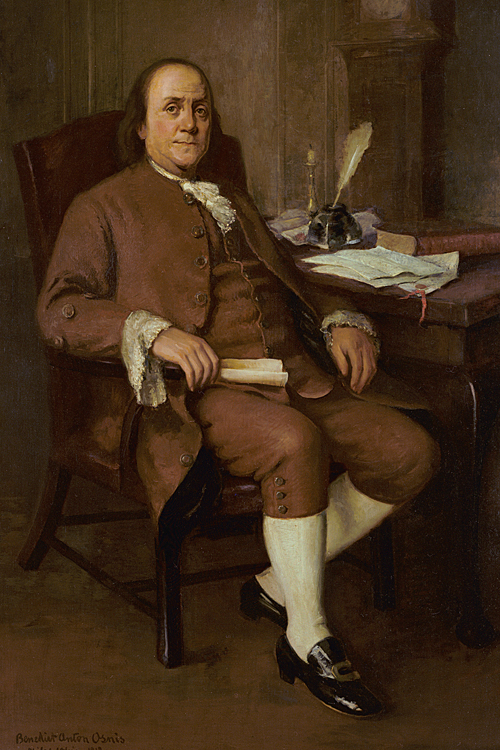Here are five things you should know about the origins of the U.S. postal system, which will mark its 245th anniversary on July 26.
1. The American postal system was established in Philadelphia. On July 26, 1775, members of the Second Continental Congress, meeting in the City of Brotherly Love, created the position of Postmaster General and named Benjamin Franklin to it, directing him to appoint deputies and establish “a line of posts … from Falmouth in New England to Savannah in Georgia, with as many cross posts as he shall think fit.” This simple statement signaled the birth of the Post Office Department, the predecessor of the Postal Service.
2. Franklin served as Postmaster General until November 1776. With an annual salary of $1,000 and $340 for a secretary and comptroller, Franklin was responsible for all Post Offices — about 75 in all — and had authority to hire Postmasters as necessary. He was in office when the Declaration of Independence was adopted in July 1776, which made Franklin the first Postmaster General of the United States. He was succeeded by his son-in-law, Richard Bache.
3. The mail helped promote a free press. The first major postal law, passed by Congress in 1792, encouraged the exchange of newspapers by allowing them to travel through the U.S. Mail at extremely low rates of postage — in some cases for free — to ensure the success of the democracy. As Thomas Jefferson later wrote, “No experiment can be more interesting than that we are now trying … that man may be governed by reason and truth. Our first object should therefore be, to leave open to him all the avenues to truth. The most effectual hitherto found, is the freedom of the press.”
4. The postal system is written into the Constitution. In June 1788, the Constitution was ratified, giving Congress the power to “establish Post Offices and post Roads” in Article I, Section 8. A year later, an act of Congress made the Postmaster General subject to the direction of the president. Four days later, President George Washington appointed Samuel Osgood as the first Postmaster General under the Constitution.
5. The postal headquarters moved in 1800. That year, the headquarters relocated from Philadelphia to Washington, DC, when the latter became the seat of government. Two horse-drawn wagons carried all postal records, furniture and supplies.
